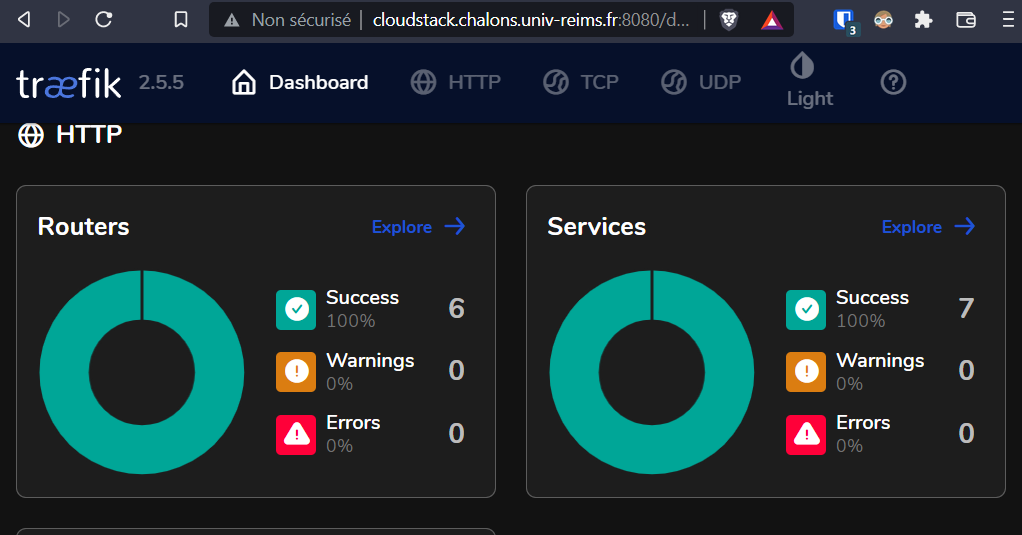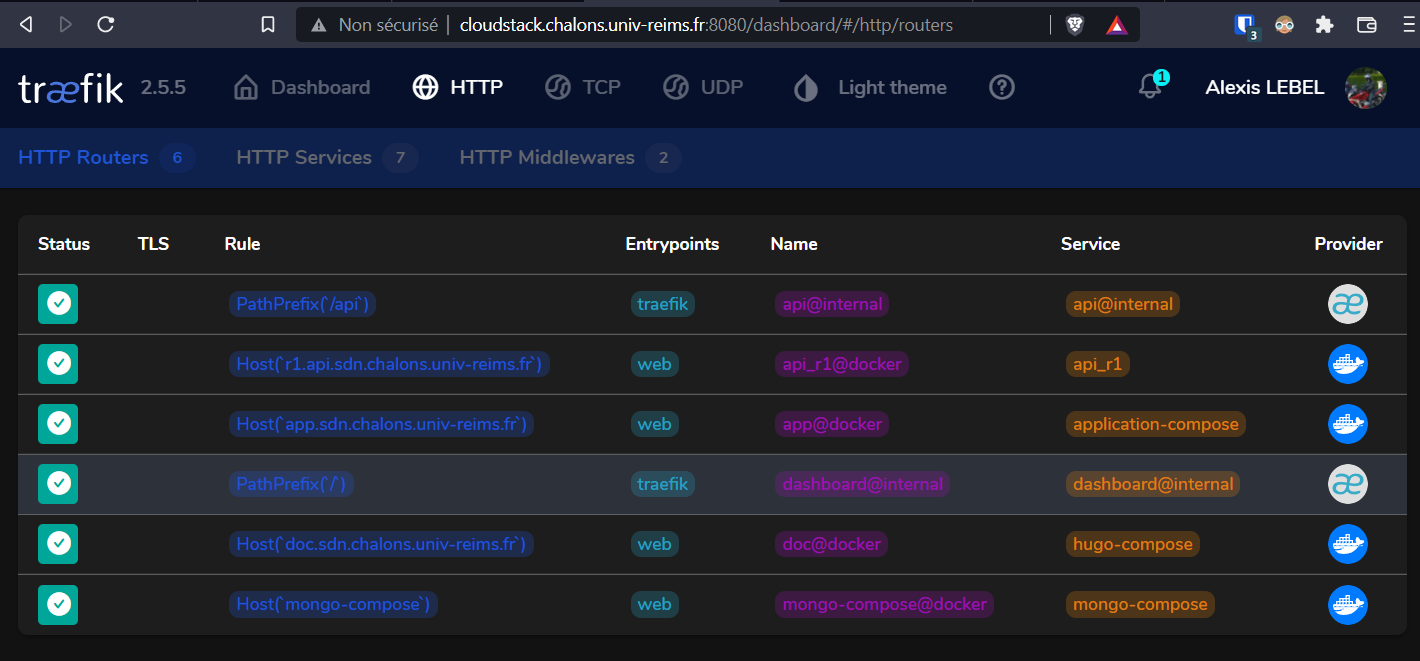Traefik Reverse Proxy
We have seen in previous chapters, the configuration of NGINX reverse-proxy. However, today, with Docker, NGINX is a bit obsolete, and there are more dynamic solutions like Traefik, which we will talk about in this article.
The Traefik reverse proxy
Traefik is an open-source reverse-proxy (also called edge router).
A reverse proxy is a program that manages access to servers in a network behind it, adding security, logging, and sometimes encryption.
Traefik’s special feature is its service discovery function, which means that it works with Docker to create its configuration for the containers that are running.
To do this, it needs to be given the Docker socket path, which we’ll see in the next part, the configuration
Configuration
The configuration of the reverse-proxy Traefik is very simple. First of all, you need to instantiate a Traefik container in the docker-compose file:
reverse-proxy:
# The official v2.0 Traefik docker image
image: traefik:latest
# Enables the web UI and tells Traefik to listen to docker
command:
--api.insecure=true
--providers.docker
--entrypoints.web.address=:80
ports:
# The HTTP port
- "80:80"
# The Web UI (enabled by --api.insecure=true)
- "8080:8080"
volumes:
# So that Traefik can listen to the Docker events
- /var/run/docker.sock:/var/run/docker.sock
- /home/user/compose/traefik/traefik.toml:/etc/traefik/traefik.toml
- /home/user/compose/traefik/acme.json:/acme.json
- /home/user/compose/traefik/access.log:/var/log/access.log
networks:
backend:
Next, we edit the configuration file :
[api]
dashboard = true # Activate the control panel..
insecure = true #.. in http
[entryPoints]
[entryPoints.web]
address = ":80" # Set port 80 as entry
[providers]
[providers.docker]
watch = true
exposedByDefault = false
network = "backend" # Enable docker services discovery, on the "backend" network
[accessLog]
filePath = "/var/log/access.log" # Log file
[pilot]
token = "un-token" # Token for the "pilot" web service
We can then activate the service on the different containers:
hugo:
image: nginx:latest
restart: always
volumes:
- /home/user/compose/hugo/sdn_notice/public/:/usr/share/nginx/html/
labels:
- "traefik.enable=true" # Enable reverse-proxy for this container
- traefik.http.routers.doc.rule=Host(`doc.sdn.chalons.univ-reims.fr`)" # Allows to define the access URL
networks:
backend:
[...]
api_r1:
[...]
labels:
- "traefik.enable=true"
- "traefik.http.services.api_r1.loadbalancer.server.port=8000" # Allow to specify the target port
- "traefik.http.routers.api_r1.rule=Host(`r1.api.sdn.chalons.univ-reims.fr`)"
The web interface
Once the configuration is done, we can access the web interface, which runs on port 8080:


This interface is only informative, no configuration can be done from it.